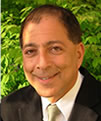My Kopplin Kuebler & Wallace colleagues and I are often surprised that so many qualified candidates that we meet, screen, and interview, seem somewhat oblivious to some key strategies that will help insure that they’ll get a better than fair chance to be considered for that next great opportunity.
Most of the time, when it comes to looking for a new opportunity people will focus solely on the subject matter of their resume and cover letter. In this installment of Job Search 101 we’re not going to be focusing on subject matter but on all of the little things that will make sure that your subject matter and you get a chance to be reviewed.
File Names
You’ve emailed in your resume and cover letter to a club, this may be your dream job, and you’ve named your file “Resume.pdf” or “______Country Club Resume.doc.” Are you getting the idea? Clubs and executive search firms may receive well over a hundred applications for a good job. Isn’t your resume more likely to be looked at, or even not lost, if it is named: “Smith, John Resume.pdf”?
Resume Contact Information
Now you’ve named your resume properly and you’ve gotten someone’s interest and they want to talk to you but you haven’t included your cell phone number on your resume or cover letter. They might set your resume aside and go on to another one; they may even forget to come back to it. Include your cell number and name on the footer of every page of your resume and cover letter. Make it easy for someone to reach out to you!
They’re calling you and you either don’t recognize the number or you’re at work so the call goes to voicemail. That’s where the problem often begins.
The Critical Call
The most common offenses:
Having the generic message, “We’re sorry, the person at (five five five) five five five – five five five five is not available, please leave a message.” Well, that’s certainly inspiring and makes a great first impression. Personalize your message!
Another and potentially worse offense is the “message box is full” alert, this signifies that you are poor at time management.
Another offender is the message that sounds like you were in a wind tunnel or with strange background noises. Review your message before leaving it as your public phone face.
Mr. or Ms. Monotone. Smile and dial! Let potential employers know you have a pulse. If your outgoing message makes it seem as if you have no energy, need a coffee, and are at the DMV you are not going to make a positive impression.
You’ve missed the call and go to return it.
Everyone is mobile today, so call back on your cell phone so that they can simply hit redial.
If you have to call from a landline and you leave your cell number in the message, you’ve made it less likely for a quick return call.
When you leave your cell number in a voice message, try this, “Let me leave you my cell number,” and then give your cell number and then repeat it, speaking slowly. This gives people a chance to get a pen and write it down. And then let them know that you’ll be texting the number to them.
Text Concerns
Candidates often send texts and the recipient, whether it’s a club official or a search executive, has no idea who it is from and has to ask who it is. Think about that before you send a text to someone.
The person that you are texting may not have you in their contacts. The first time you text them put your name on the text message and include your Ecard.
Follow up your first cell or other call with a text including your Ecard.
Next Installment
These simple common sense strategies on communication will give you and your information a better chance of getting noticed. The next installment of Job Search 101 will focus on the subject matter of your resume, cover letter, and more of what we’ve seen successful candidates do…stay tuned!
 Armen Suny
Armen Suny
Armen provides searches for General Managers, Golf Course Superintendents, and Golf Professionals. He is available to consult on agronomics and golf course master plans. Most of his 35 years in the industry has been spent at Top 100 facilities. He has been a General Manager, Golf Course Superintendent, Golf Course Designer, and Tournament Director. He’s overseen Major Championships, PGA Tour events and golf community workouts.

